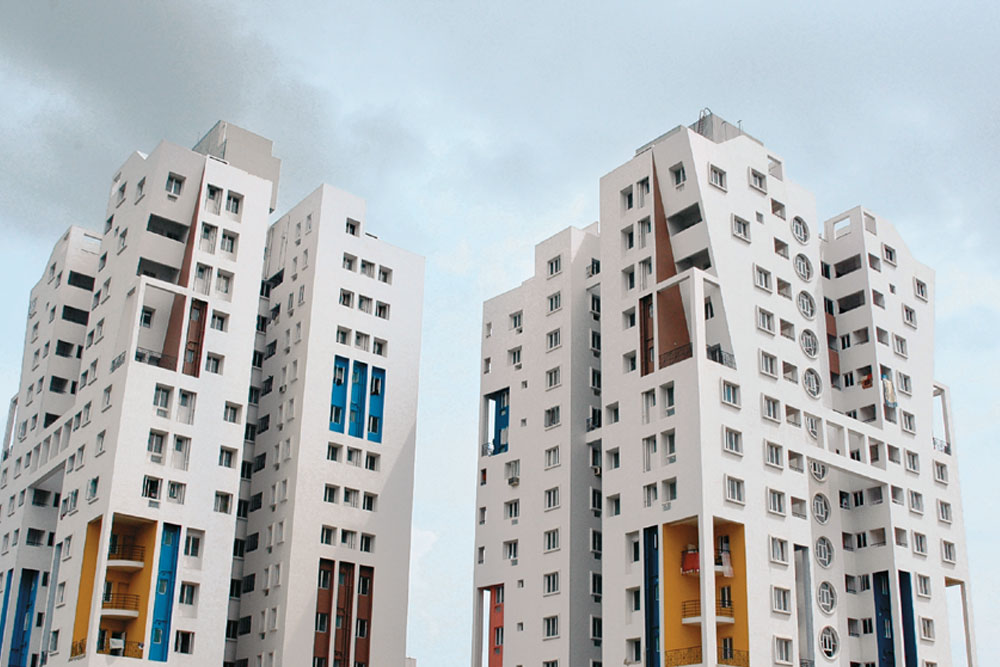For the salaried class, owning a house is like a dream. To turn this dream into reality, homebuyers face several hurdles like tweaking income, expenditure and liabilities and slashing household budget. Most in Mumbai are forced to take up a rental space, far away from workplace, for a cheaper solution.
Buying a house is a costly affair. Arranging home finance is a big challenge, coupled with lengthy paperwork and high stamp duty.
Despite the Reserve Bank of India (RBI) substantially reducing repo rate in last three years, banks have failed to pass on the benefits to end users, complains Sharad Mittal, Director and CEO, Motilal Oswal Real Estate. Currently, RBI’s repo rate stands at 5.15 per cent. It was 6.50 per cent in August 2018, 7.75 per cent in January 2015, and eight per cent in January 2014. However, banks have not slashed lending rates accordingly and this has not helped.
Adhil Shetty, CEO, Bankbazaar, feels typically, interest rates on home loans depend on a number of factors, including creditworthiness of the applicant. Home loan interest rates range from 7.95 per cent to 10 per cent and upwards, he explains.
Mittal argues that the concept of affordable housing needs to be redefined. “Affordable housing has been defined as houses having a value up to Rs 45 lakh. This limit should go up since it is difficult to get a house in cities like Mumbai within this limit,” he says.
There are various loan schemes available in the market for purchase of a house, plot, construction and renovation. Maximum loan tenure allowed is up to 30 years.
Deo Shankar Tripathi, MD and CEO of Aadhar Housing Finance, feels, “Loans are available at fixed and floating rate schemes. I personally feel one should always opt for the floating rate and longer loan period so that there is no chance of default of EMI, even when there is a pressure on income.” The salaried class is under tremendous pressure to buy a house, either from spouse, children or parents.
Suresh Sadagopan, Certified Financial Planner and Founder of Ladder7 Financial Advisories, feels real estate pressures on professionals are very high.
He explains if someone takes a home loan worth Rs60 lakh for a one-bedroom flat in south Mumbai, one will roughly have to pay an EMI in the range of Rs53,000 to Rs55,000 per month. “In contrast, one can easily get a three bedroom apartment at a monthly rent of Rs40,000 to Rs45,000,” he says.
In majority of the cases, a person earning a monthly salary of `1 lakh stays in a one-bedroom ‘purchased flat’, with his wife, children and in some cases parents. “This means majority don’t stay in an ideal or suitable home. Instead, they stay in a place they can barely afford to,” he complains.
The spike in realty prices has forced home buyers go for housing loans. There are many players who offer affordable housing loan schemes at attractive rates. Banks, Non-Banking Financial Companies (NBFCs), and big and small Housing Finance Companies (HFCs) lend to both homebuyers and builders.
Both HFCs and banks have their advantages and disadvantages. For instance, banks offer low interest rates but if one’s credit score is dented or one needs funds on an urgent basis, then an NBFC could be better suited for that requirement. Either way, it is best to do one’s homework and compare quotes.
Shetty says loan sanctioning process is usually more complex in case of banks than NBFCs that offer relaxed policies to customers with low credit scores.
“Another factor is the loan to value ratio. If you consider the cost of stamp duty, registration, and an assortment of payments towards brokerage, furnishing, repairs, the actual cost of acquisition goes up to 105 per cent to 125 per cent of the value,” Shetty says.
Banks are allowed to fund up to 80 per cent of a property’s value. The other 25 per cent to 35 per cent would have to be met by the buyer. Often, these last mile costs weigh heavily on the final decision.
NBFCs and banks, both, are not allowed to fund stamp duty and registration costs. However, NBFCs can include these costs as part of market valuation. This allows the customer to borrow a larger amount as per eligibility, giving the NBFCs an edge.

“The government has done away with most of the once-popular subvention scheme, wherein buyers paid only a fraction of the property cost at the time of purchase,” Anuj Puri, Chairman, Anarock Property Consultants, explains.
There are many options available. Under SBI’s Maxgain scheme, Sadagopan says, a home loan seeker gets a current bank account, linked to the home loan. If a person has `10 lakh in the account and has taken Rs60 lakh home loan, the rate of interest will be levied only on Rs50 lakh. The interest rate may be higher but it comes with benefits a “plain vanilla home loan scheme” does not offer, he adds.
ashfaque@outlookindia.com

